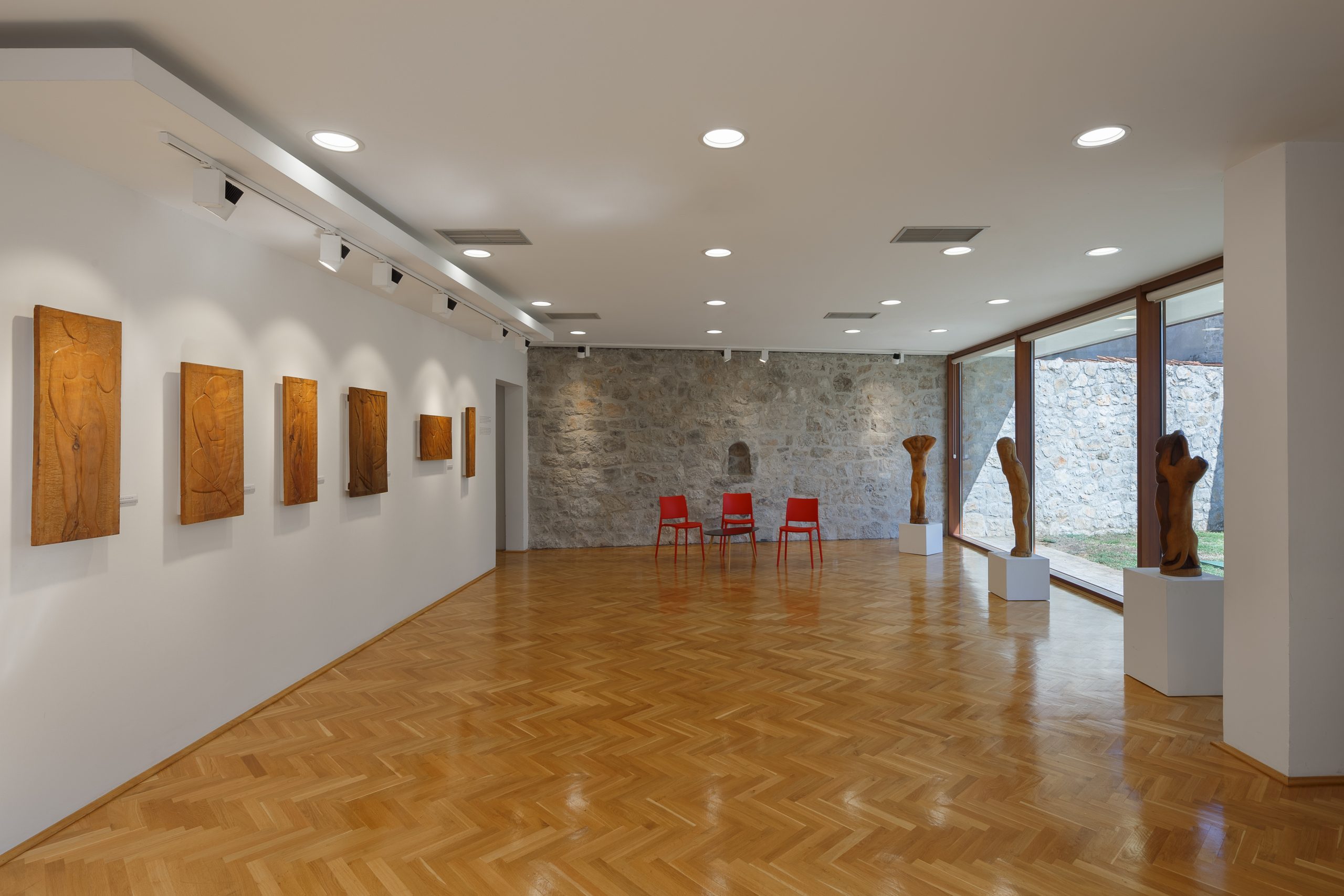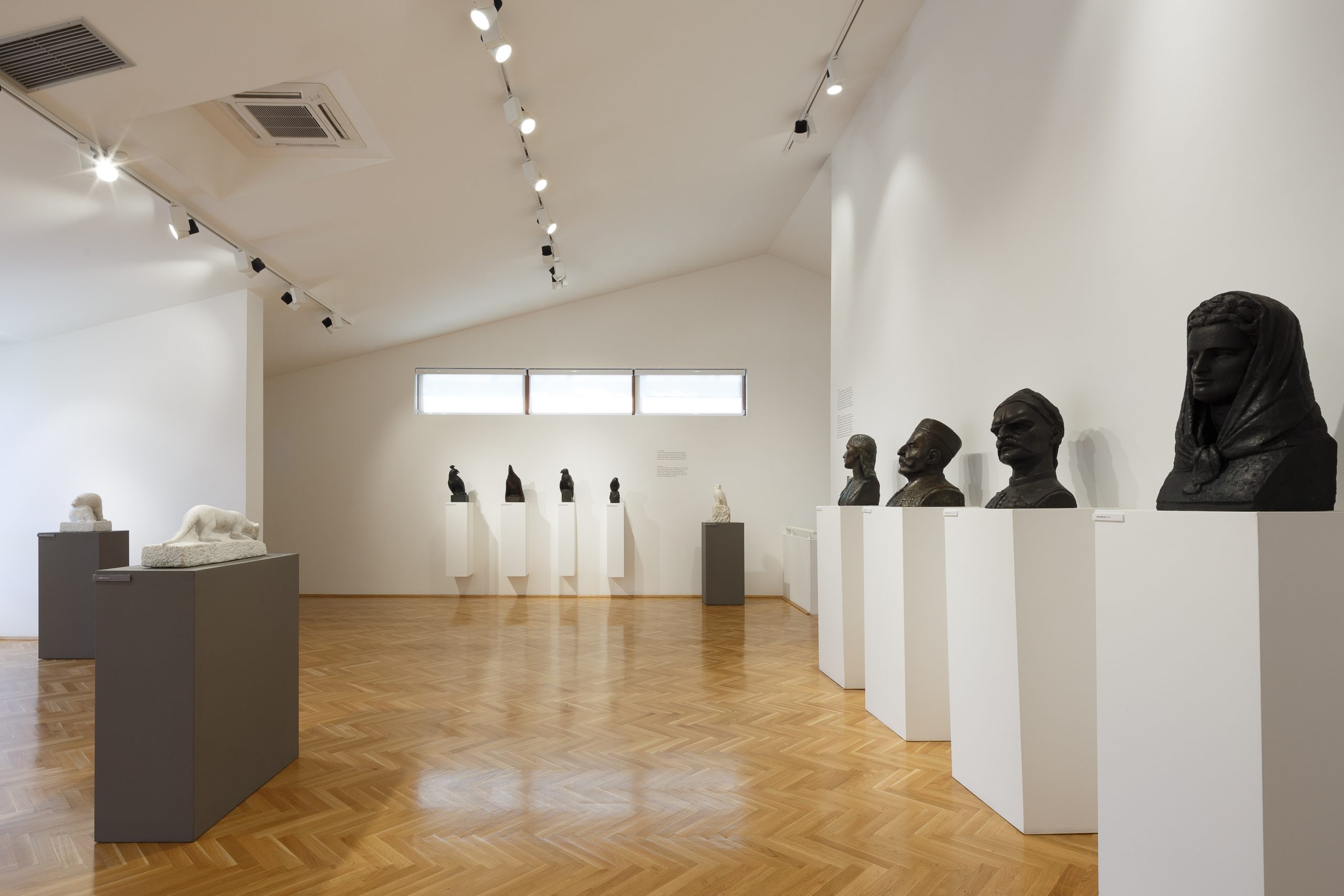Gallery Risto Stijović

The Gallery "Risto Stijović" is a memorial gallery built on the site where the birth house of Risto Stijović was located in the Old Town. It preserves, studies, and presents works that mainly represent the legacy left by Stijović to his hometown.
Risto Stijović (1894–1974) is one of the most prominent visual artists of the 20th century in the former Yugoslav region and holds a special place in the corpus of modern art. He is the founder of the modernist expression in sculpture in Montenegro. Personally, he was a noble and modest man with a refined sense of human and natural beauty. In his work, he explored various themes, realizing female nudes and figural representations, birds and animals, numerous portraits of friends and contemporaries, reliefs, and architectural decorative sculptures, as well as monumental public sculptures. In this regard, sculptures and reliefs made of wood are presented on the ground floor of the Gallery, while works in bronze, marble, and gypsum – female nudes, portraits, animals, and characters from Gorski vijenacare displayed on the upper floor Veliki ženski actexecuted in marble in the courtyard space.
The Gallery itself was established in 1970, while the existing building, a new neo-modernist gallery form corresponding to the heritage of the Old Town, was realized according to the project of architect Aleksa Dajović (2018).
… pod linkom opširnije
Risto Stijović was born in Podgorica in 1894 into a wealthy merchant family. He received his first art lessons at the School of Arts and Crafts in Belgrade, under the renowned professor Đorđe Jovanović, in the Sculpture Department (1912). He continued his education in France, in Marseille and Paris (1917). He graduated from the famous Ecole des Beaux-Arts in 1923, but he found much more inspiration in the Louvre's exhibits, galleries, and cafes than in academic lessons. In the spirit of the contemporary fascination with the Far East and black and prehistoric art, he questioned academic traditions by embarking on a new course of individual explorations of form and expression. He exhibited his works at numerous Parisian salons from 1919, as well as in private galleries, where he was highly regarded, and his work was affirmatively judged.
In 1928, he returned to Belgrade, where he worked at the Third Men's Gymnasium as a professor and lived until 1974. Not accepting the academic style prevailing in the Yugoslav environment at the time, Stijović continued to work in his own manner, creating a distinctive plastic style. He carefully shaped the material and respected its structure. He continued to work in his individual manner even after World War II when the dominant style, socialist realism, also did not suit his temperament.
He was a member of many artistic associations ("Lada," "Oblik," "Dvanaestorica"), and from 1965, a regular member of the Serbian Academy of Sciences and Arts (SANU). He received numerous awards, among which the early example stands out the Grand Prix – a gold medal at the World Exhibition in Paris in 1937, where he represented Yugoslav sculpture.
Stijović achieved his greatest achievements by depicting female nudes and figural compositions in wood, bronze, and various types of stone, and he also proved himself as an animalist through the realization of numerous sculptures of animals and birds. Among his works, the monumen Lovćenska vila in Cetinje stands out in the field of monumental public sculpture.


